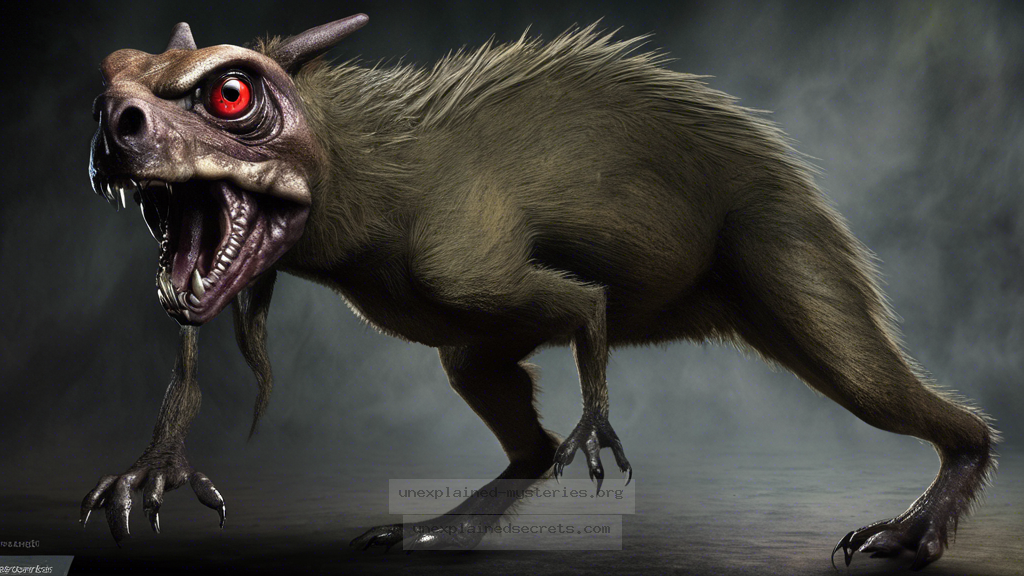Is the Chupacabra a Myth or a Real Creature? Exploring the Evidence
Is the Chupacabra a Myth or a Real Creature? Exploring the Evidence
The Chupacabra, a creature cloaked in mystery and fear, has captivated the imaginations of people around the world since it was first reported in the 1990s. But what exactly is the Chupacabra? Is it merely a figment of folklore, or is there credible evidence to suggest that it is a real creature? This question matters not just for cryptozoologists and monster hunters, but for anyone interested in the intersection of mythology, science, and the unexplained. In this post, we will delve into the origins, sightings, scientific investigations, and cultural impact of the Chupacabra, aiming to uncover the truth behind this enigmatic entity.
Historical Context: The Birth of the Chupacabra Legend
The term “Chupacabra” translates to “goat-sucker” in Spanish, a name derived from the creature’s reported habit of attacking livestock, particularly goats, and draining their blood. The legend first emerged in Puerto Rico in the mid-1990s, coinciding with a series of mysterious livestock deaths. The first widely publicized sighting was in 1995 when a woman named Madelyne Tolentino claimed to have seen a creature responsible for killing her goats. Descriptions varied, but common elements included sharp spines along its back, red eyes, and a reptilian appearance.
Since then, reports of Chupacabra sightings have spread across the Americas, from Puerto Rico to Texas and beyond. While the creature’s appearance and behavior remain inconsistent across accounts, the core idea of a blood-sucking beast has remained constant, embedding itself into the cultural fabric of many communities. This legend raises questions about how folklore evolves and the psychological aspects of cryptid sightings.
Core Concepts: What is the Chupacabra? Theories and Descriptions
The Chupacabra is often depicted in one of two primary forms: the classic reptilian version, and the more canine-like variant. Early descriptions emphasized a creature with leathery skin, spikes, and a size comparable to a small bear. The canine version, which gained popularity in the 2000s, resembles a hairless dog, often attributed to mange, yet displaying unusual behaviors that have led some to believe it is a distinct entity.
Various theories have emerged regarding the Chupacabra’s origins. Some suggest it could be a previously unknown species, while others argue it may be a misidentified animal or even an extraterrestrial being. The debate continues among cryptozoologists, scientists, and skeptics, with each camp presenting its own interpretations of the evidence.
Documented Cases: Notable Sightings and Investigations
Over the years, numerous sightings of the Chupacabra have been reported. One notable case occurred in 2004 in Texas, where a group of ranchers discovered several dead goats, their blood drained. Some claimed to have seen a creature resembling the Chupacabra lurking nearby. In 2007, a woman in New Mexico reported seeing a hairless creature that matched the descriptions of the Chupacabra, leading to a media frenzy.
In addition to anecdotal evidence, some researchers have attempted to collect biological samples from suspected Chupacabra remains. In 2009, a hairless animal was found in Texas and initially thought to be a Chupacabra. Testing revealed it was a coyote suffering from mange. Such findings have led to skepticism regarding the existence of the creature, prompting the question: are these sightings merely cases of mistaken identity?
Scientific Investigations: What Do Experts Say?
Many scientists and animal behaviorists approach the Chupacabra with skepticism. They argue that the descriptions align closely with known animals suffering from diseases, such as mange or rabies. For instance, the hairless “Chupacabra” captured in Texas was confirmed to be a coyote. This has prompted further investigations into the psychological and sociological factors behind cryptid sightings.
Furthermore, the rise of the internet and social media has amplified the phenomenon of cryptid sightings. Many reports may be fueled by sensationalism or a desire for notoriety. This complicates the task of serious researchers trying to determine the veracity of Chupacabra claims.
Comparative Analysis: Chupacabra vs. Other Cryptids
When analyzing the Chupacabra, it is useful to compare it to other well-known cryptids, such as Bigfoot and the Loch Ness Monster. Each creature has its own unique folklore and cultural significance, yet they share similarities in terms of reported sightings and the psychological impacts on witnesses. Below is a comparison table highlighting key aspects:
| Cryptid | Origin | Description | Common Sightings |
|---|---|---|---|
| Chupacabra | Puerto Rico, 1995 | Reptilian or canine-like, blood-sucking | Puerto Rico, Texas, Mexico |
| Bigfoot | North America, 19th century | Large, hairy humanoid | Pacific Northwest, Canada |
| Loch Ness Monster | Scotland, 6th century | Large aquatic creature, resembling a dinosaur | Loch Ness, Scotland |
Alternative Perspectives: Skepticism vs. Belief
The Chupacabra’s existence is a contentious topic, dividing believers and skeptics. Believers often cite the emotional impact of sightings and the cumulative nature of anecdotal evidence as justification for their belief. They argue that even if some sightings can be explained, this does not account for all reports. Skeptics, however, point to the lack of physical evidence, the propensity for misidentification, and the influence of folklore as reasons to dismiss the creature as a myth.
In the realm of cryptozoology, the challenge is balancing open-mindedness with scientific rigor. While believers may pursue leads that could validate the existence of the Chupacabra, skeptics urge caution, advocating for evidence-based approaches to understanding these mysterious creatures.
Common Misconceptions: Debunking the Myths
Several misconceptions surround the Chupacabra legend that can cloud understanding. One common myth is that the creature is exclusively a “goat-sucker.” While initial reports focused on livestock, many sightings have reported attacks on other animals, including dogs and poultry. Another misconception is that the Chupacabra is a single species; in reality, it encompasses various interpretations and sightings.
Best Practices for Investigation: Approaching Cryptozoology
For those interested in investigating the Chupacabra or other cryptids, a systematic approach is essential. Here are some best practices:
- Document Evidence: Always document sightings with photographs, videos, and detailed descriptions.
- Research Local Folklore: Understanding the local culture can provide context for sightings and reports.
- Collaborate with Experts: Engage with wildlife biologists and cryptozoologists for insights and guidance.
- Remain Skeptical: Maintain a healthy skepticism and be open to logical explanations for sightings.
Future Developments: Ongoing Research and Exploration
As technology advances, the potential for uncovering the truth behind the Chupacabra increases. Genetic testing, camera traps, and advanced tracking methods may yield new insights into unexplained sightings. Additionally, as researchers continue to study the psychological aspects of cryptid sightings, we may gain a deeper understanding of why such legends persist in modern culture.
Moreover, the growing interest in biodiversity and conservation may bring more attention to the habitats where these creatures are reported, potentially leading to discoveries of unknown species or subspecies.
Conclusion: The Enigma of the Chupacabra
The question of whether the Chupacabra is a myth or a real creature remains unresolved. With a rich history of sightings, cultural significance, and ongoing debate among believers and skeptics, the Chupacabra continues to be a fascinating topic of inquiry. While scientific investigations often lean towards skepticism, the allure of the unknown keeps the legend alive in the public consciousness.
Ultimately, whether the Chupacabra is a misunderstood animal, a product of folklore, or something entirely different, it serves as a reminder of humanity’s enduring fascination with the mysterious and unexplained. As we look to the future, the quest for answers may illuminate not just the truth about the Chupacabra, but also our intrinsic curiosity about the world around us.
Other Articles
Recent Posts
- What Happened to Flight MH370? The Conspiracy Theories That Still Haunt Us
- What Secrets Lurk Within the Walls of the Infamous Trans-Allegheny Lunatic Asylum?
- What Evidence Supports the Existence of Bigfoot in the Pacific Northwest?
- What Happened to the Indus Valley Civilization? Unraveling the Mysteries of Ancient Urban Life
- Can Telepathy Be Scientifically Proven Through Laboratory Evidence?







